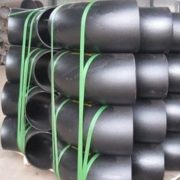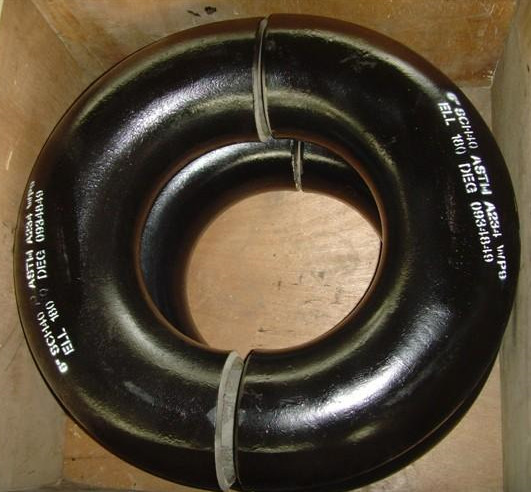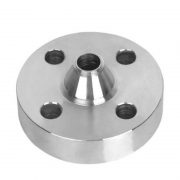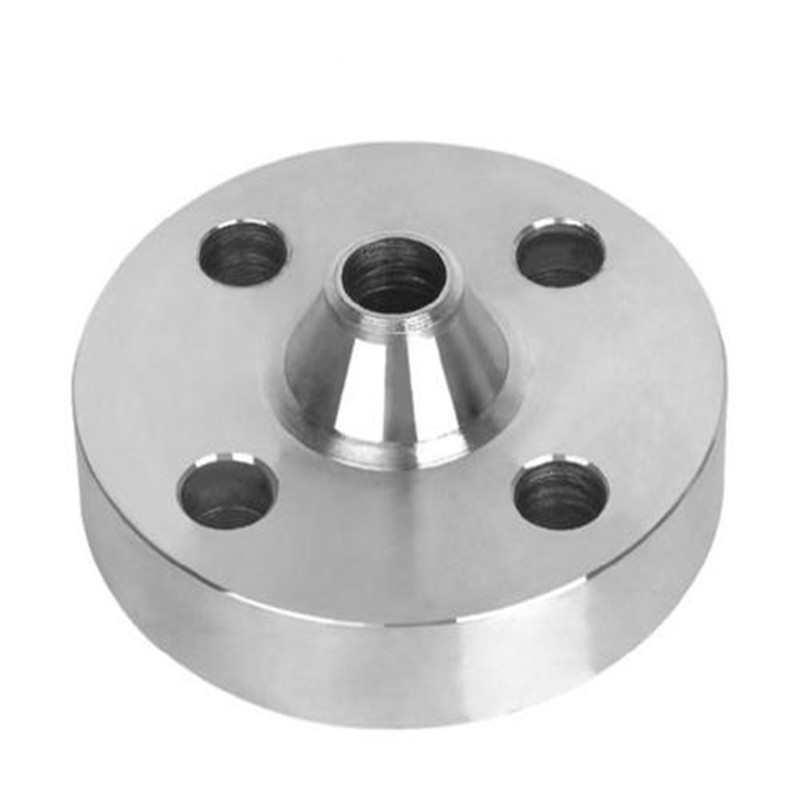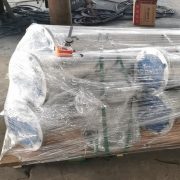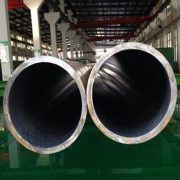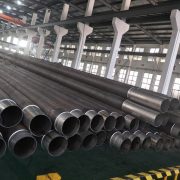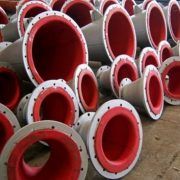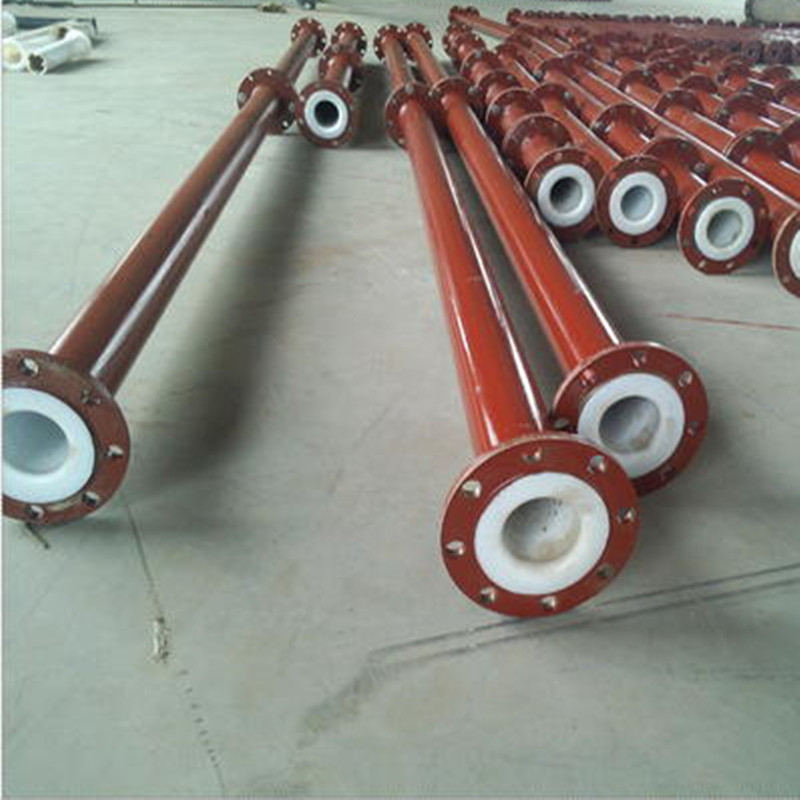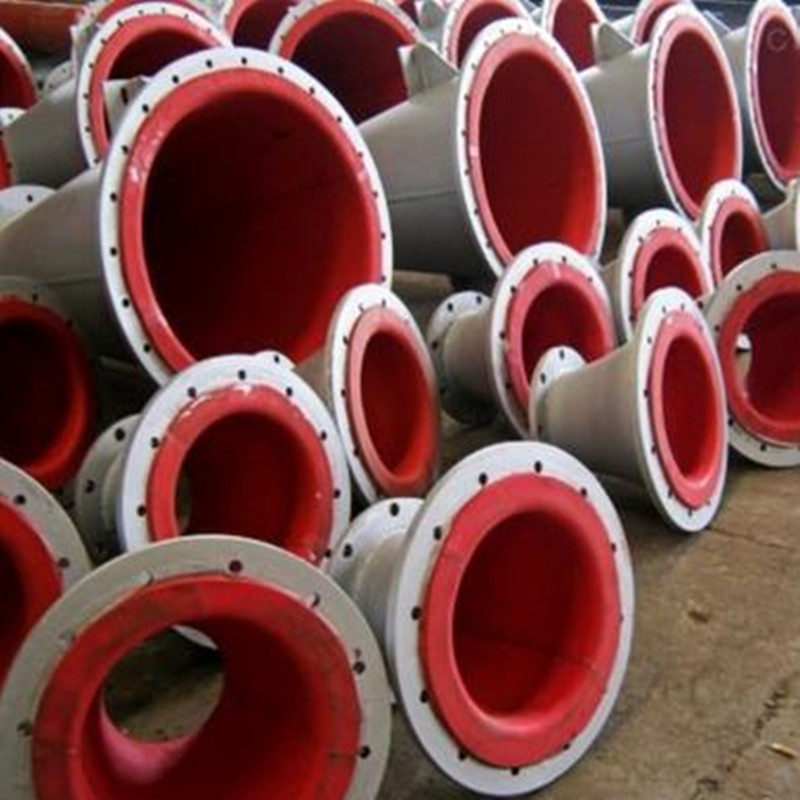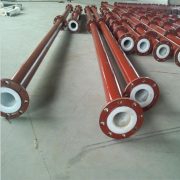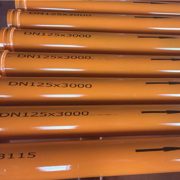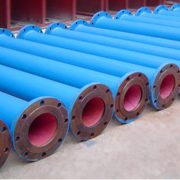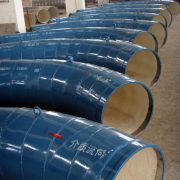1. The principle of self-propagating ceramic composite pipe:
The ceramic composite pipe is manufactured by self-propagating high temperature synthesis + centrifugal casting, that is, the seamless steel pipe is placed in the tube mold of the centrifuge, and the thermite (a mixture of iron oxide powder and aluminum powder) is added to the steel pipe, and the centrifuge tube mold After the rotation reaches a certain speed, the thermite is ignited by electricity, the combustion wave spreads rapidly, and the explosion takes shape. The following violent chemical reactions occur during spreading:
• 2A1+Fe2O3=Al2O3+2Fe+836KJ
• 3Fe3O4+8Al=4AL2O3+9Fe+3256KJ
After the reaction, the products a-Al2O3, ß-Al2O3 and iron, and emit a lot of heat at the same time. Due to the rapid reaction, only a few seconds, the molten reactant is quickly separated according to the specific gravity under the action of centrifugal force. The specific gravity of iron (7.85g/cm3) is twice that of Al2O3 (3.95 g/cm3), and the heavier iron Throwing to the inner wall of the steel pipe by centrifugal force, the lighter Al2O3 is distributed in the inner layer of iron; due to the rapid heat absorption and heat transfer of the steel pipe, Al2O3 and Fe quickly reach the freezing point and solidify in layers; the final ceramic steel pipe is formed separately from the inside to the outside It is a corundum porcelain layer, an iron-based transition layer, and an external steel pipe layer. High-temperature molten iron and Al2O3 liquid contact with the inner wall of the steel pipe to make the inner wall of the steel pipe in a semi-soluble state, so that the iron layer and the steel pipe form a metallurgical bond, and the iron layer and the corundum ceramic layer also form a firm bond.
2. Features of self-propagating ceramic composite pipe
• The composite pipe made by the high-temperature centrifugal synthesis method is a dense corundum ceramic that is fired at a high temperature of 2200 degrees. The dense corundum ceramic and steel pipe are firmly combined by the transition layer.
• Process: Ceramic powder + iron oxide powder + magnesium oxide powder are mixed in proportion (the main component is iron oxide, black), seal both ends of the pipe, add the powder, rotate the pipe, electronic ignition, and sinter on the inner wall of the pipe by centrifugal method. The effect of pipes below ø100 is better. The pipe is generally black.
• Features: high strength, good toughness, impact resistance, good weldability, which solves the contradiction between weldability and wear resistance.
• Wear resistance and high temperature resistance
3. Spontaneous combustion application field
Self-spreading ceramic composite pipes can be used in high temperature areas, with simple production, convenient construction, and low cost. The diameter of the pipe is not more than 600mm, and the wear resistance is lower than that of ceramic patch pipes.
Disadvantages: Due to the short reaction time, the low-temperature phase alumina and molten iron are not completely separated, resulting in the ceramic layer is not dense, the particles are loose, the micro-cracks are many, the quality is brittle, it is easy to partially fall off and fail, and it cannot be compensated after fall off. It can only be made into a straight tube. If it is made into an elbow, the straight pipe must be divided into several sections for welding. The formed elbow is not streamlined, which hinders material transportation and reduces the output force of the equipment
Decho is a professional supplier on self-propagating ceramic composite pipe. If you need any , pls feel free to contact us by email [email protected]

